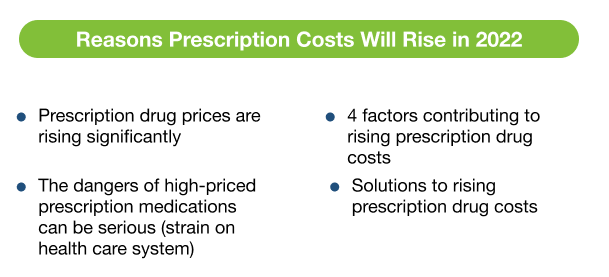
Among all developed nations, Americans pay the highest prices for prescription drugs. Here are the main reasons prescription drugs are so expensive in America.
The cost of prescription medication in the U.S. has been on the rise for years. Between 2019 and 2020 , the price of most prescription drugs in the U.S. rose faster than inflation.
About a third of Americans do not take their medication due to unaffordable drug pricing. We have compiled a detailed guide explaining why prescription drugs in the U.S. are so expensive.
Why are prescription drug prices so high in the U.S.?
Americans spend twice as much as other developed nations on prescription drugs, according to the global, intergovernmental Organization for Economic Cooperation and Development . In 2019, former president Donald Trump claimed that drug pricing had reduced for the first time in 51 years. In a real sense, though, this had very little effect on the ground. For every drug whose prices were lowered, 96 others increased.
Very few people have access to free medication, so many patients use their medical insurance to help them cover the costs. In many instances, insurance isn’t enough to cover all the medical expenses, and some insurance plans cover very little of prescription costs – or none at all. Patients often end up paying for much of the expense of their medications out of their own pockets.
And those are the people who have private health insurance plans. For Americans without insurance, the path to quality health care and access to necessary prescriptions is even more difficult.
Two words: Big Pharma
There are a number of factors that cause the prices of prescription drugs to skyrocket. However, drug manufacturer pricing is the greatest cause. Big pharma companies are essentially allowed to set their prices with zero regulation , and typically, for at least the first six years the drug is on the market, other manufacturers are not allowed to introduce much less expensive generic versions.
And the U.S. government protects these rights, making America the only country that does not regulate drug pricing. Overpricing began in 2003 after Congress restricted the government from negotiating drug prices. Since then, many drug companies have taken advantage of the existing legislation to ensure they remain unchallenged.
Part of this problem is the lack of a solid, integrated health care system. Other developed nations, including Canada and the United Kingdom, have drug regulatory programs that negotiate drug prices to more manageable costs for patients. They also reject drugs from companies that fail to offer reasonable drug pricing.
The battle between brand-name drugs and generics
Prices remain exorbitantly high in America because the legislation allows for government-protected monopolies that prevent the production and introduction of generics into the markets for years.
Generics are identical to brand-name drugs. They have similar dosage, efficacy, side effects, safety, and risks, and they come at a much lower price compared to name-brand drugs.
Due to the difference in prices, some patients may doubt the effectiveness of generics and therefore end up buying brand names instead. People often do not realize that generics and brand-name drugs work exactly the same way.
The FDA will only approve drugs if they meet their criteria, whether a brand name or generic. Because they work exactly the same as brand-name drugs at a fraction of the cost, patients who wish to save on health care costs should embrace generics. Those with chronic conditions who need regular drug refills would benefit the most.
Big pharmaceuticals have been steadily increasing the prices of the most-used drugs. Data analysts expect the prices to keep rising, making the need for generics even more urgent.
Protecting the strength of the drug industry
Drug manufacturers claim they use the profits they collect to strengthen the industry. However, the drug industry only spends an average of about 10% of their revenue to produce the drugs. Yet they price the drugs based on how much economic burden the market can bear.
These monopolies don’t just make a reasonable profit, they demand as much as – and often more than – consumers can manage.
Manufacturers cite various reasons for their ultra-high prices. Research and development is, in most cases, the go-to excuse. They also claim supply chain partners are a reason for high drug prices.
The reality of Big Pharma funding
However, Harvard Medical School researchers have invalidated these claims. In reality, the National Institute of Health funds research and development through federal grants. If this funding is not enough, additional financing comes through venture capital. This private equity facilitates the research of risky projects that look promising.
Currently, there is no hope for reasonably priced brand-name drugs in sight, and it will be a difficult problem to remedy. Big pharma has set a strong opposition by leveraging Congress. Because of this, it would be difficult to maintain low prices for prescription drugs even if a solution arose.
Should you switch from brand-name drugs to generics?
It is best to consider generics, particularly if your insurance coverage for prescriptions is limited or if you regularly need refills on your prescription medications. Generics are also an excellent choice for those on a fixed income or who don’t have any health insurance at all.
Other ways to save on your prescription medications
The good news is, you can save up to 90% on all your medication at your local pharmacy. ModRN Health helps you compare the prices of drugs between all the local pharmacies. Patients who use the service can also find information about their prescriptions on the site, including side effects, interactions with other medications, and other important facts.
You could also earn reward points by filing a prescription and referring other patients to use the service. Contact ModRN Health today and set prescription reminders via SMS or email on the site.








